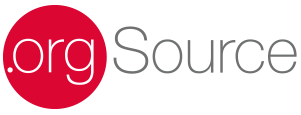When Everything Feels Urgent, Nothing Moves Forward

How .orgSource Helped One Association Stop Spinning and Start Leading.
We were called in by an association that looked great from the outside. Smart, passionate staff. Solid technology. A strong mission and a committed member base. But under the surface, things were unraveling fast.
The problem? Focus.
They couldn’t hold it. Every week brought a new “top priority.” Projects were constantly shuffled, re-scoped, or abandoned. The strategic plan lived in a binder, untouched. Teams were overworked and under-supported. Vendors were left hanging, unsure who had authority to move things forward.
And the biggest red flag? Everyone felt like they were failing—despite working harder than ever.
Here’s what was really happening
We diagnosed four core issues at play:
1. The tyranny of the urgent
Fire drills had become the default operating model. Instead of executing strategy, people were reacting to whoever shouted the loudest or whatever crisis popped up that day.
2. No guardrails around priorities
The organization had strategic goals… but no one was protecting them. Every new idea got treated like a mandate. Leadership couldn’t say no because there was no framework for evaluating trade-offs.
3. Disempowered teams
Without clear accountability, people hesitated to act. Collaboration turned into chaos. Instead of making decisions, teams waited – on leadership, on other departments, on vendors.
4. Vendor relationships in disrepair
Partners were frustrated. Scope was unclear. Expectations changed mid-project. And timelines? Let’s just say no one knew what “done” meant anymore. Without clarity and focus, the organization couldn’t break free of the cycle. What they needed most was a way to stop spinning and start leading.
If you’ve ever felt like your association is drowning in busyness without seeing results, you know how demoralizing this can be.
How We Helped the Association Stop Spinning and Start Leading: Bringing structure, sanity, and strategy back
At .orgSource, we believe that change management isn’t about adding more—it’s about stripping away the noise to make what matters work better.
Here’s how we approached this engagement:
✅ Phase 1: Align around a shared vision
We started with a leadership reset. In a facilitated working session, we surfaced the unspoken frustrations, clarified the business objectives, and asked each executive to define success—not in abstract terms, but in real, measurable outcomes.
From this, we distilled three strategic priorities that would become the organization’s North Star. We didn’t create empty buzzwords—we defined priorities that were focused, actionable, and owned.
✅ Phase 2: Create a prioritization framework
Next, we built the “yes/no” filter they’d been missing.
We developed a decision matrix that helped leaders and teams evaluate new requests against:
- Strategic fit
- Resource availability
- Timing
- ROI
- Member value
This simple tool became a game-changer. It gave everyone a shared language and empowered people to push back on distractions without fear.
✅ Phase 3: Establish operational clarity
The next challenge was execution.
We worked with each department to map their active projects, clarify ownership, and define roles using RACI models. We introduced weekly cross-functional check-ins focused only on priority initiatives—no status recaps, no detours, just momentum.
Then, we revamped internal communication. Project dashboards replaced guesswork. We shortened meeting agendas. Asynchronous updates gave people their time back.
✅ Phase 4: Rebuild trust with vendors and staff
Once internal operations started stabilizing, we turned to the vendors.
We brought everyone together—staff and external partners—for a facilitated alignment session. We clarified scopes, re-established timelines, and identified communication breakdowns that had been slowing everything down.
Then we helped leadership take responsibility for past missteps—and start showing up as true collaborators, not just clients.
For staff, we introduced new performance indicators focused on progress, not perfection. Wins were celebrated. Micro-improvements were tracked. Managers were trained to coach, not just delegate.
The transformation was real—and measurable
Here’s what changed in just six months:
- Three long-stalled projects launched—two ahead of schedule
- As a result, vendor satisfaction increased significantly, which in turn created more productive and collaborative partnerships.
- Staff engagement scores improved, with team members reporting greater clarity, less stress, and a stronger sense of purpose
- Leadership alignment shifted from reactive to strategic, with clearer boundaries and a bias for action
- Most importantly, the culture changed.
Teams no longer felt like they were drowning in chaos. They started seeing—and believing in—results. They stopped asking, “What should I do next?” and started saying, “Here’s what I’m doing and why.”
The takeaway? Strategy doesn’t fail because it’s wrong.
Broken execution causes strategy to fail.
This organization didn’t need more tools. They needed:
- A common definition of success
- The discipline to protect priorities
- The systems to support collaboration
- The courage to say no to the noise
At .orgSource, that’s exactly what we do. We bring clarity to the clutter. We help associations focus their energy on what moves the needle. And we support leaders in turning frustration into progress.
If your organization faces a loop of reactivity, distraction, and burnout, act now to move forward with clarity. You shouldn’t have to work this hard for so little return.
📩 Reach out to start a conversation: sherry@orgsource.com
🎧 Listen to how leaders lead through change on the Association 4.0® Podcast
Let’s turn the chaos into clarity—together.
